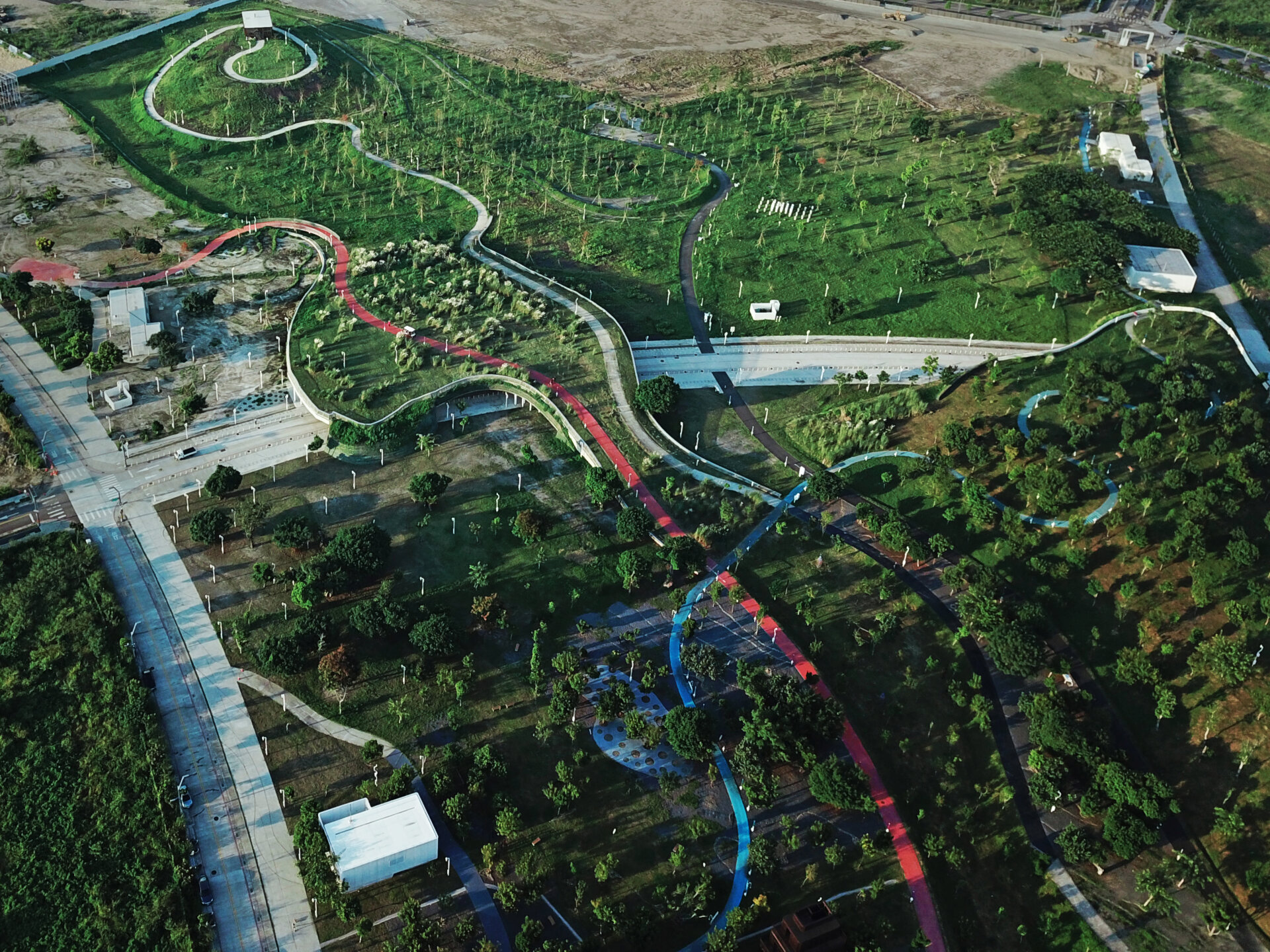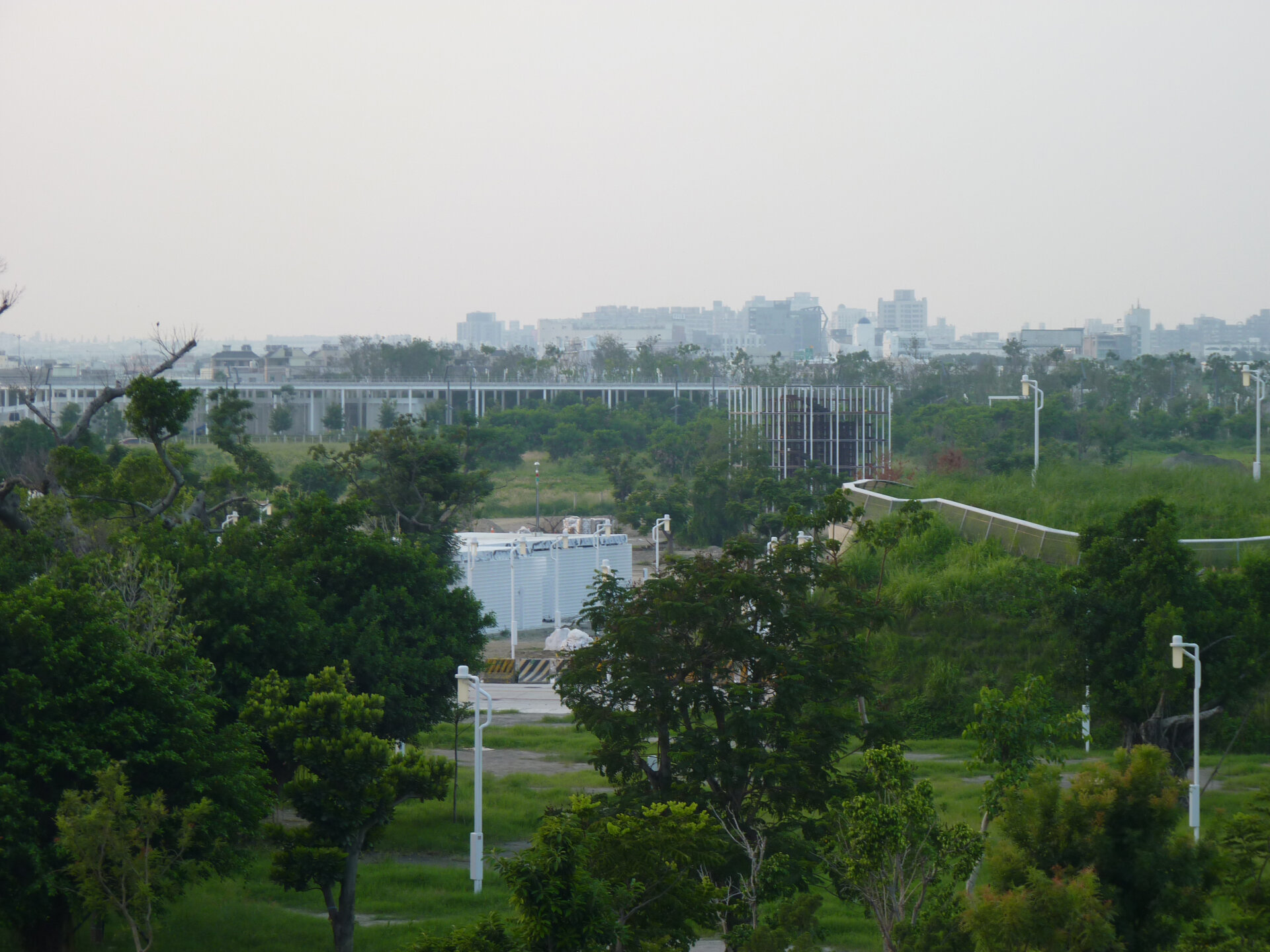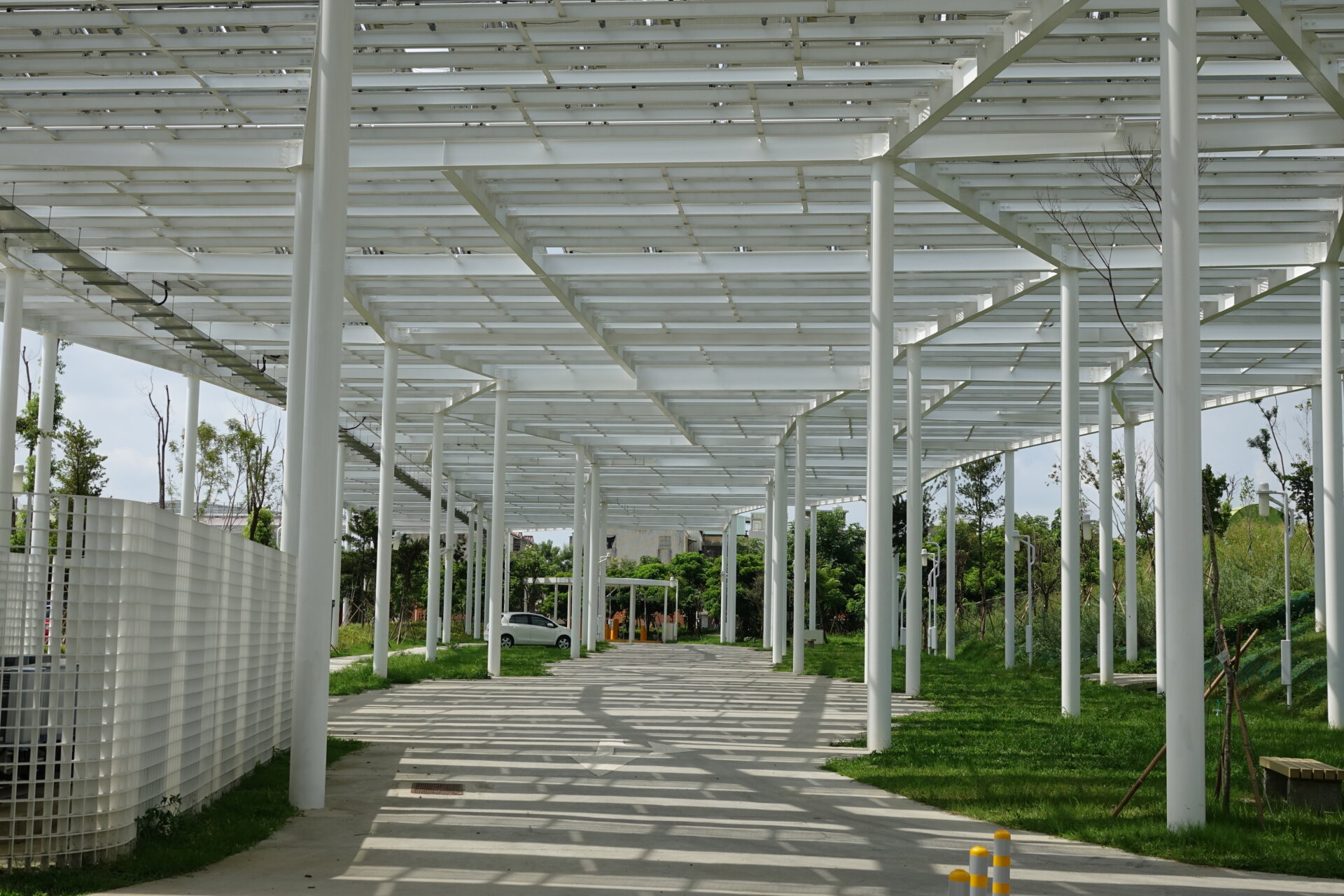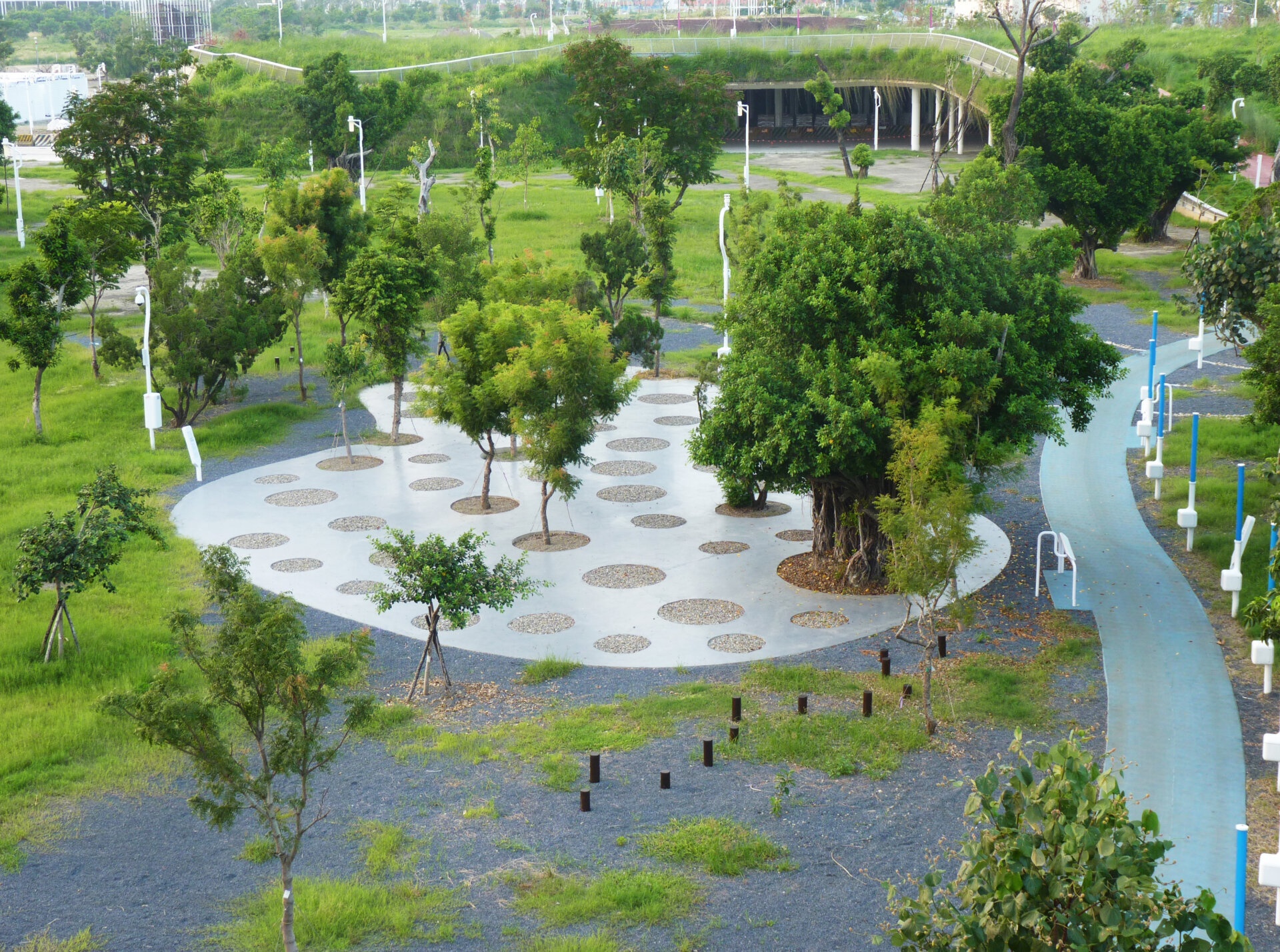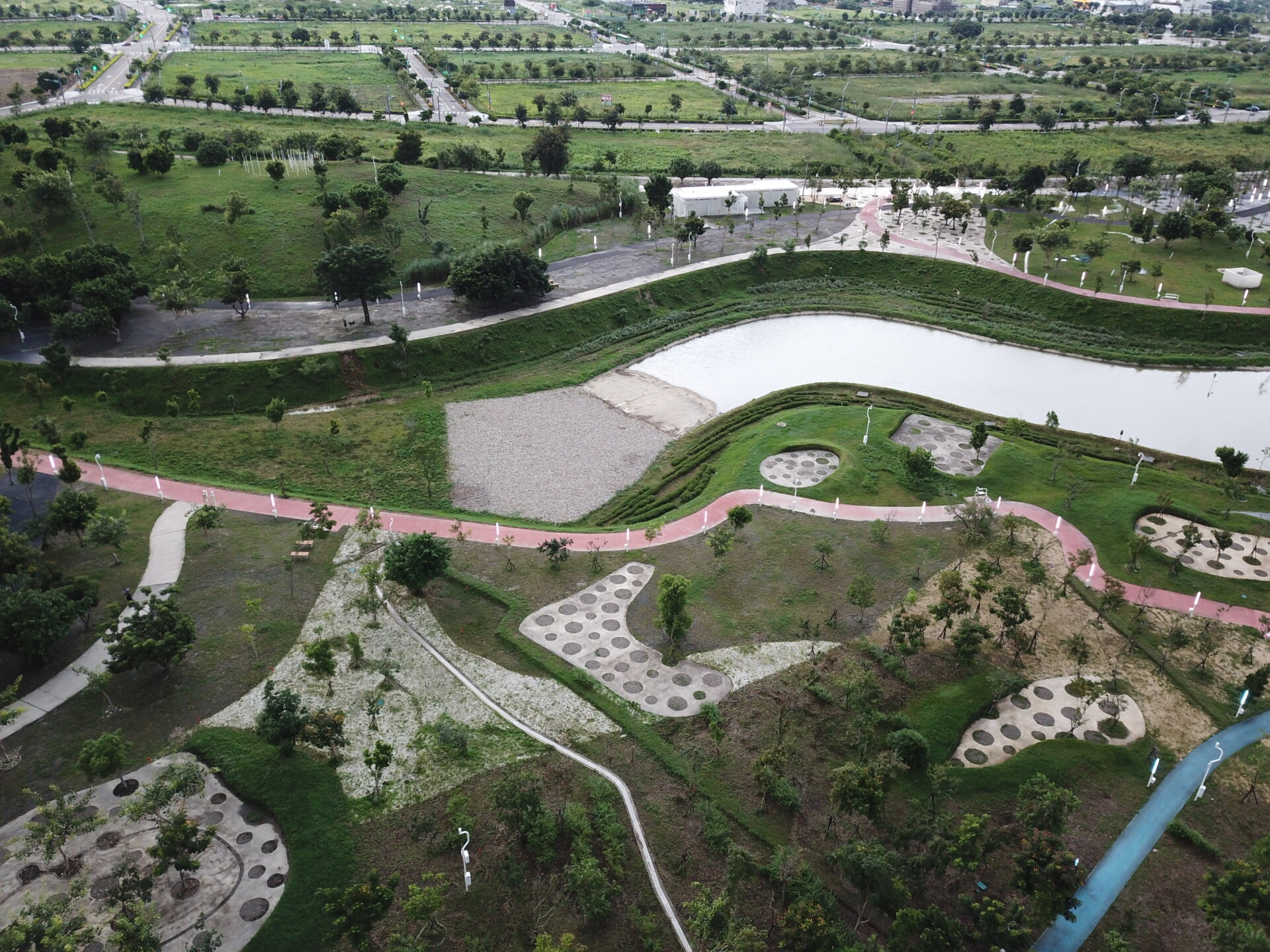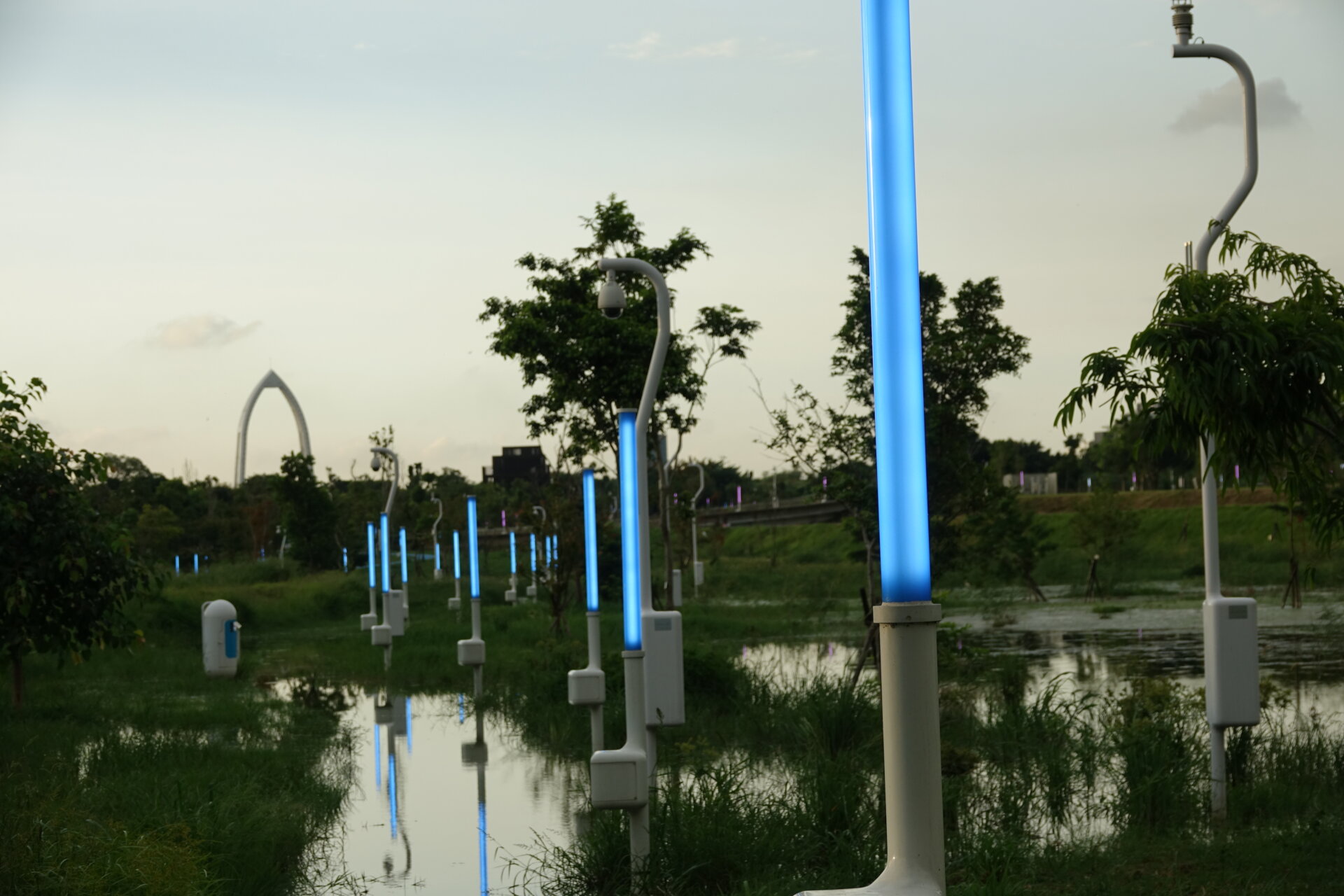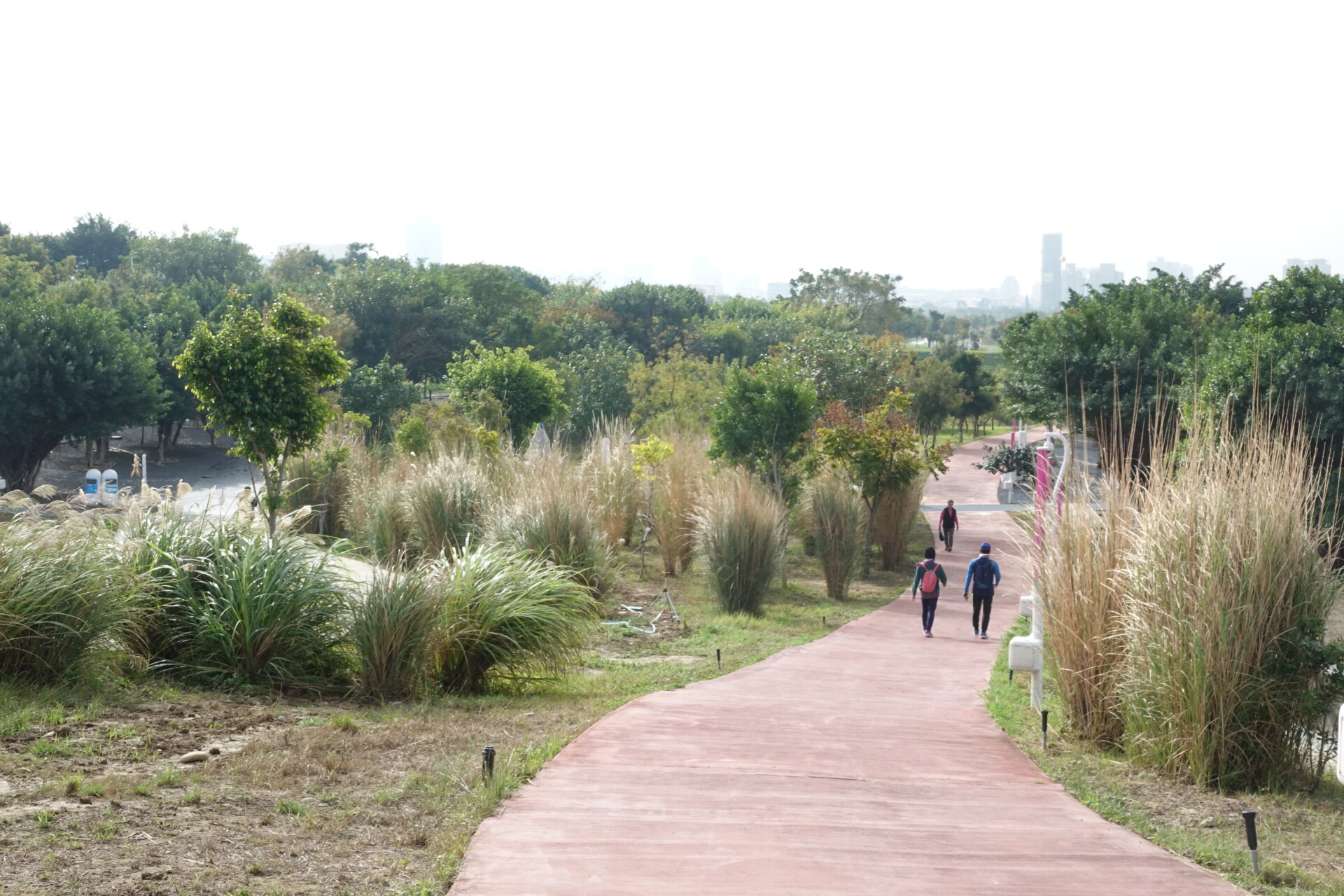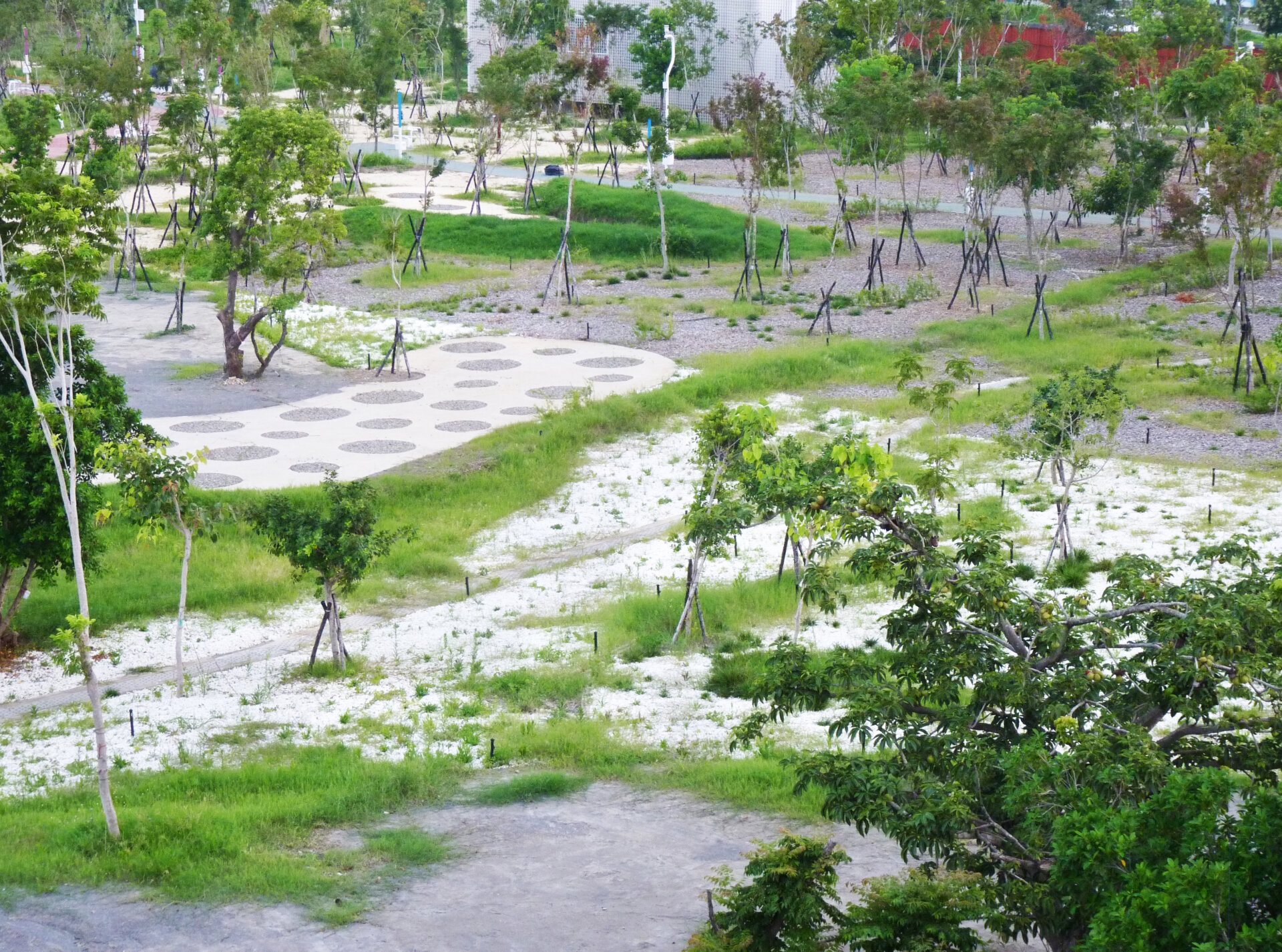

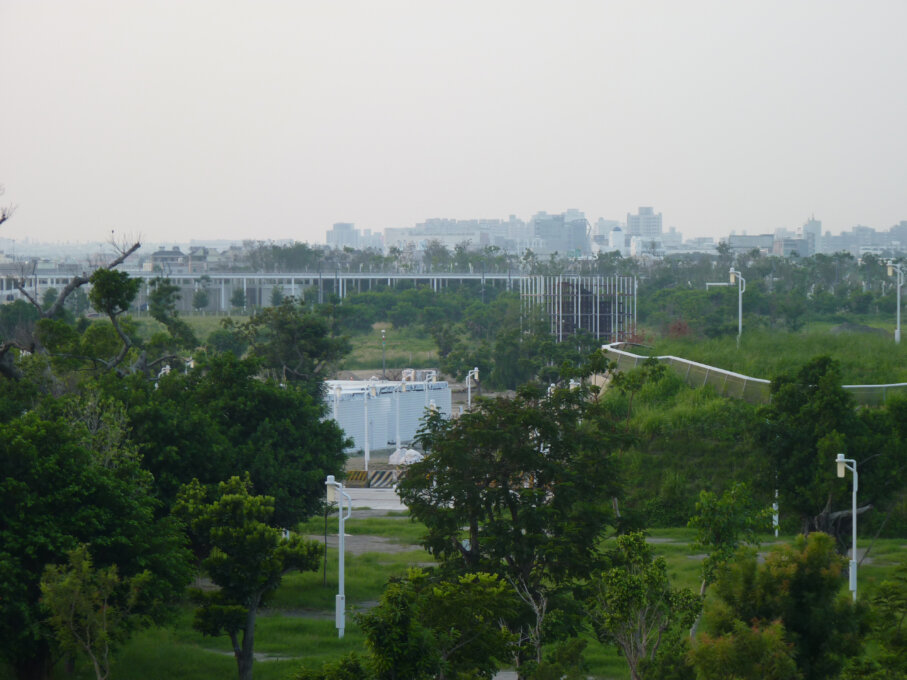
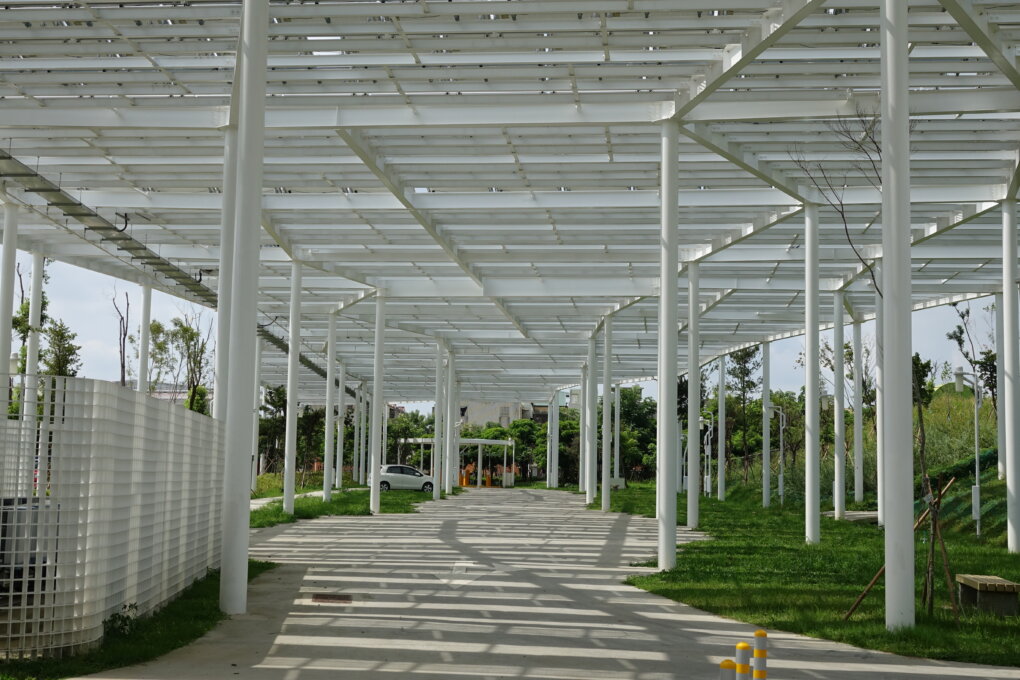

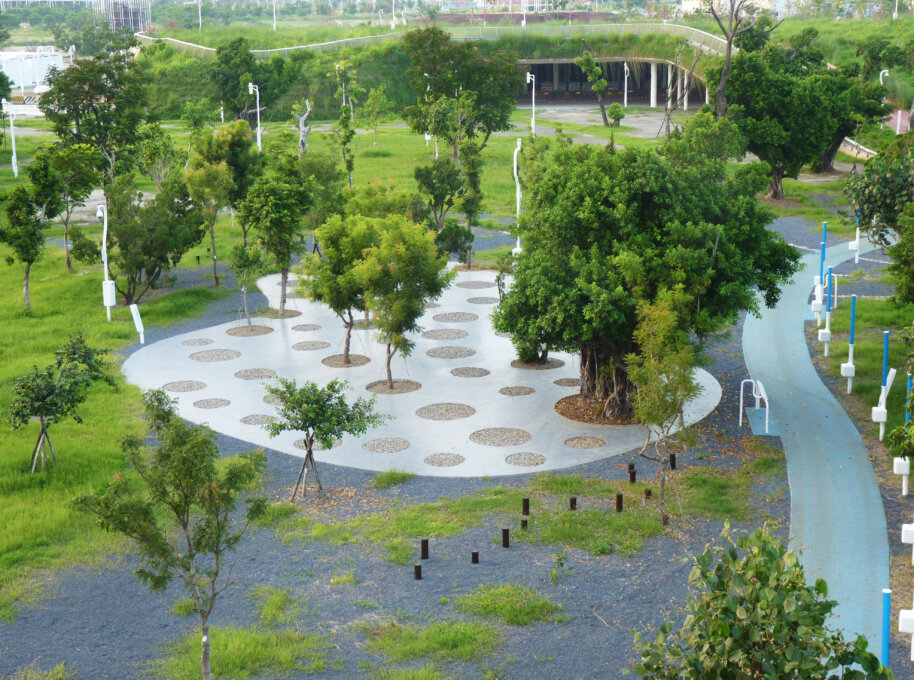
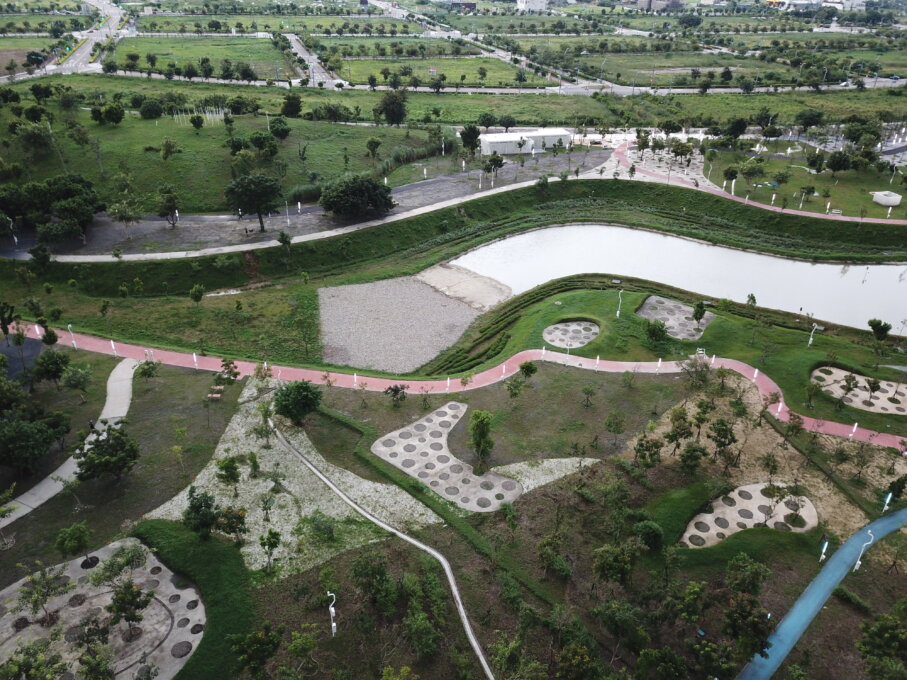

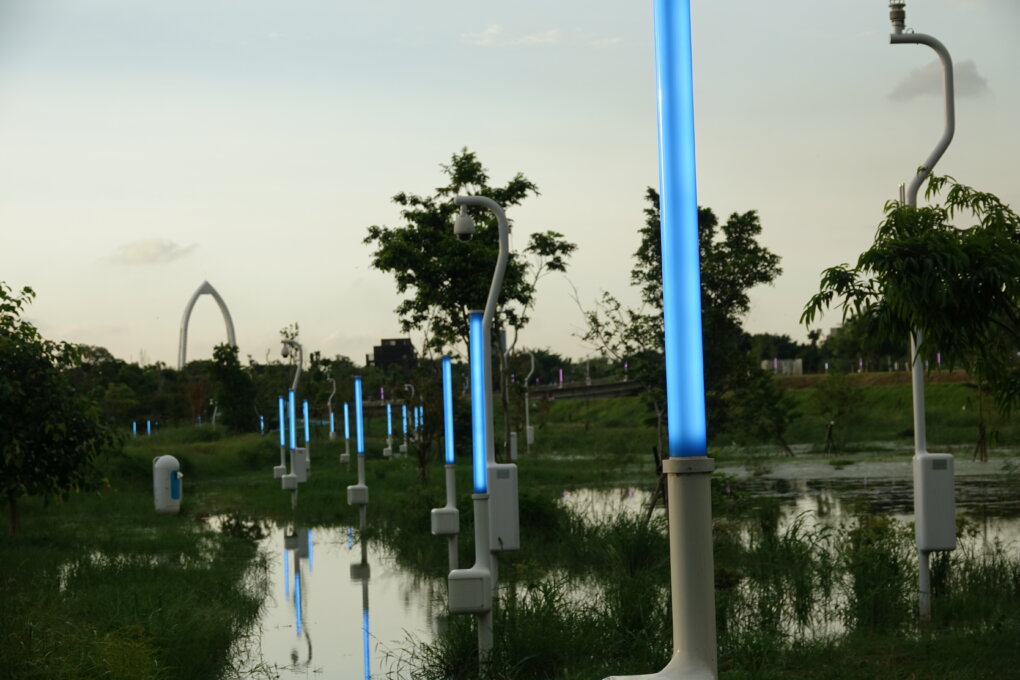
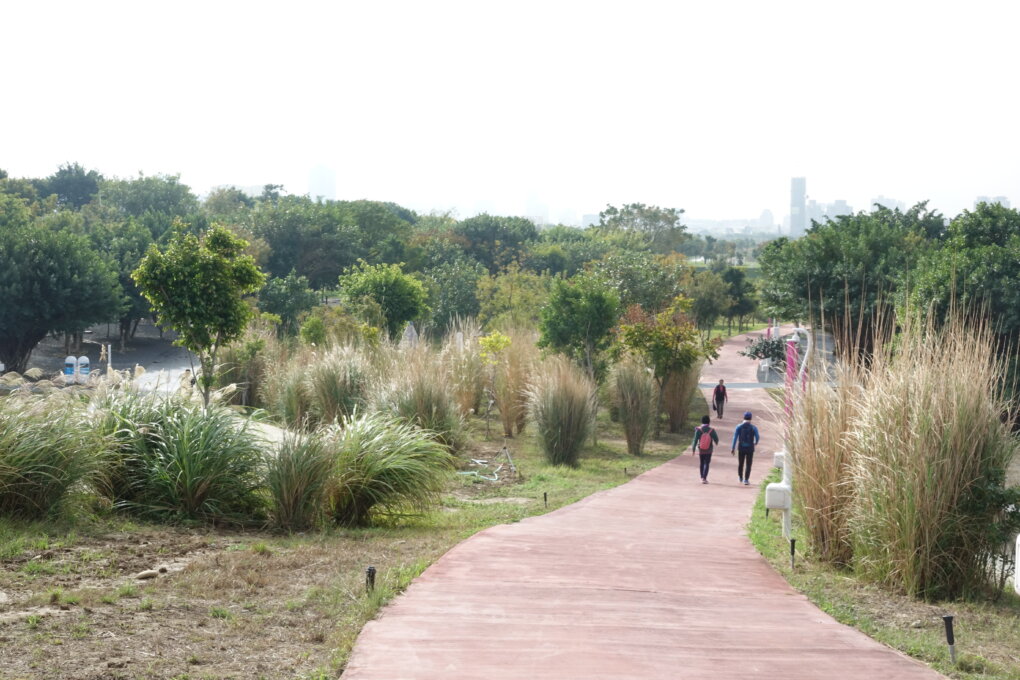
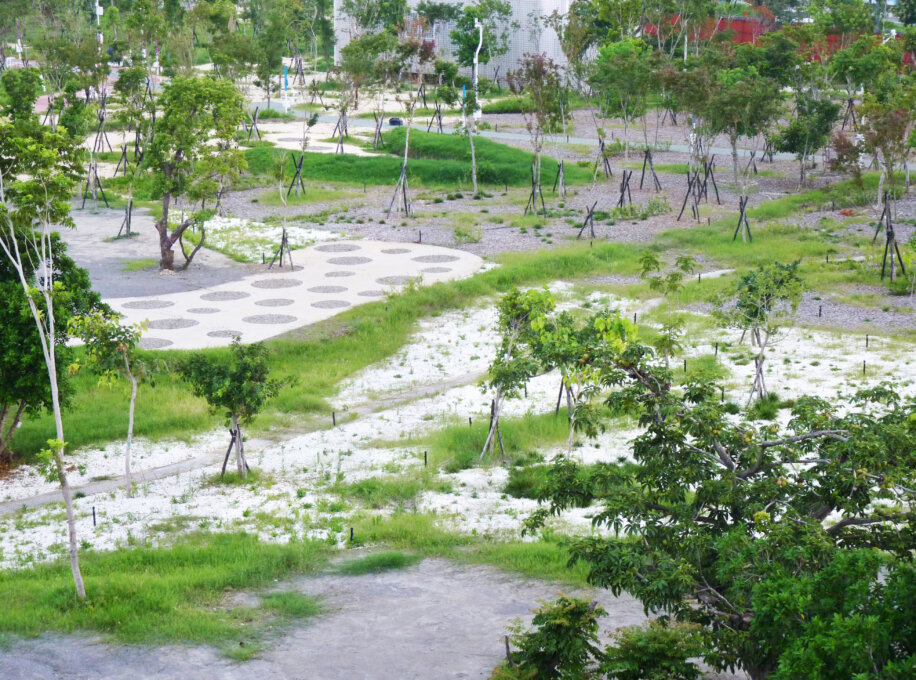
Share to
Central Park Taichung
By : mosbach paysagistes-Philippe Rahm Architectes-Ricky Liu
GRANDS PRIX DU DESIGN – 15th edition
Discipline : Landscape & Territories
Categories : Urban Design / Civic Design Project : Platinum Winner, Gold Certification
The goal of Central Park is to give back the outdoors to the inhabitants by creating landscapes where the excesses of the climate are re shaped. Its universal language relate different scales: the geographic one by the transformation of an airport into an urban landscape; the urban one by the provision of unique cultural facilities integrated into a vast public terrain; the domestic one in the porosity between districts that allow sharing of recreational opportunities. The design tools explore lithosphere design -water, topography, soil- combined with atmosphere design -heat, humidity, pollution and qualify 11 comfortable resorts with leisure’s lands, sports lands and plays lands.
A sensor mesh captures in real time the air temperature, the solar radiation, the wind velocity, the air and noise pollution. Those data are transcribed in real-time in the maintenance center. It is then depicted in three interactive maps distributed along the dedicated alley trough the resort. This system is relayed by one-hectare photovoltaic fields. The energy produced ensures the energetic autonomy of the park.The landscape pulls from North to South with partially Urban traffic covered by infrastructures. The top of the hills opens to vast horizons, while they shelter are opportunities of cultural events. The park proposes to the inhabitant sensual experiences, partly based on the 12 senses of Rudolf Steiner, with Fields of gaming, meeting or just walk through singular landscapes.Trees with very large leaves and broad canopies, like Cinnamomum camphora introduce dense and cool shade areas of leisure. Phellodendron amurense, whose bark produces everyday cork, reduces noise pollution from surrounding traffic. A duvet of trichomes, from the leaves and stems of such species as Paulownia x taiwaniana, accumulates particulates polluting the air which envelopes areas where children play. The stalks of tree ferns and the aerial roots of ficus absorb air moisture and are concentrated in the area of sports activities. The extremes of this tropical sub-humid environment are therefore moderated by the thickness of traces and marks in the design and by the physiological performance of the trees. The qualities of the park inspire citizenship in those who use the park, whether to walk, to discover, to recreate, or to do other daily activities. The planting of trees in the softscape support public access to the park and reinforce existing connections to the surrounding neighborhoods. Taking an aleatory walk about the park follows regular paths but can also lead off the beaten track towards more intimate discoveries between pavilions. The dry footpath follows the topography of water retention basins, between two water shed. The daily footpath follows sidewalks and bike paths along major thoroughfares and urban façades. When possible, the sidewalk diverges from vehicular traffic to encounter the park’s many gardens while the bike path continues along the path of shortest distance. That land is a unique place where one can feel good, can spend good time protected from heat or rain, where you can relax away from pollution, where you could have fun in the open air with your children. The park is the essential and necessary one today, of well-being, of comfort and sensual pleasures to bring to the inhabitants of metropolis.
Collaboration
Photographer : victor chohao wu




